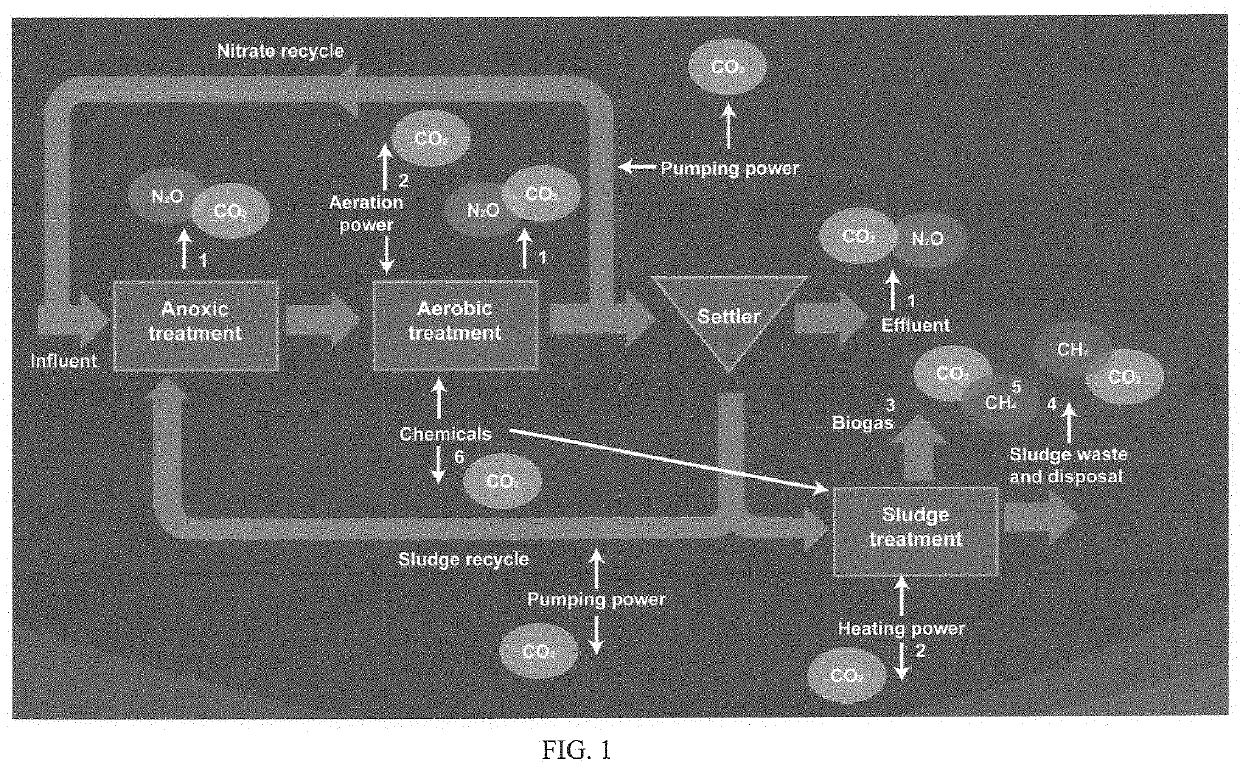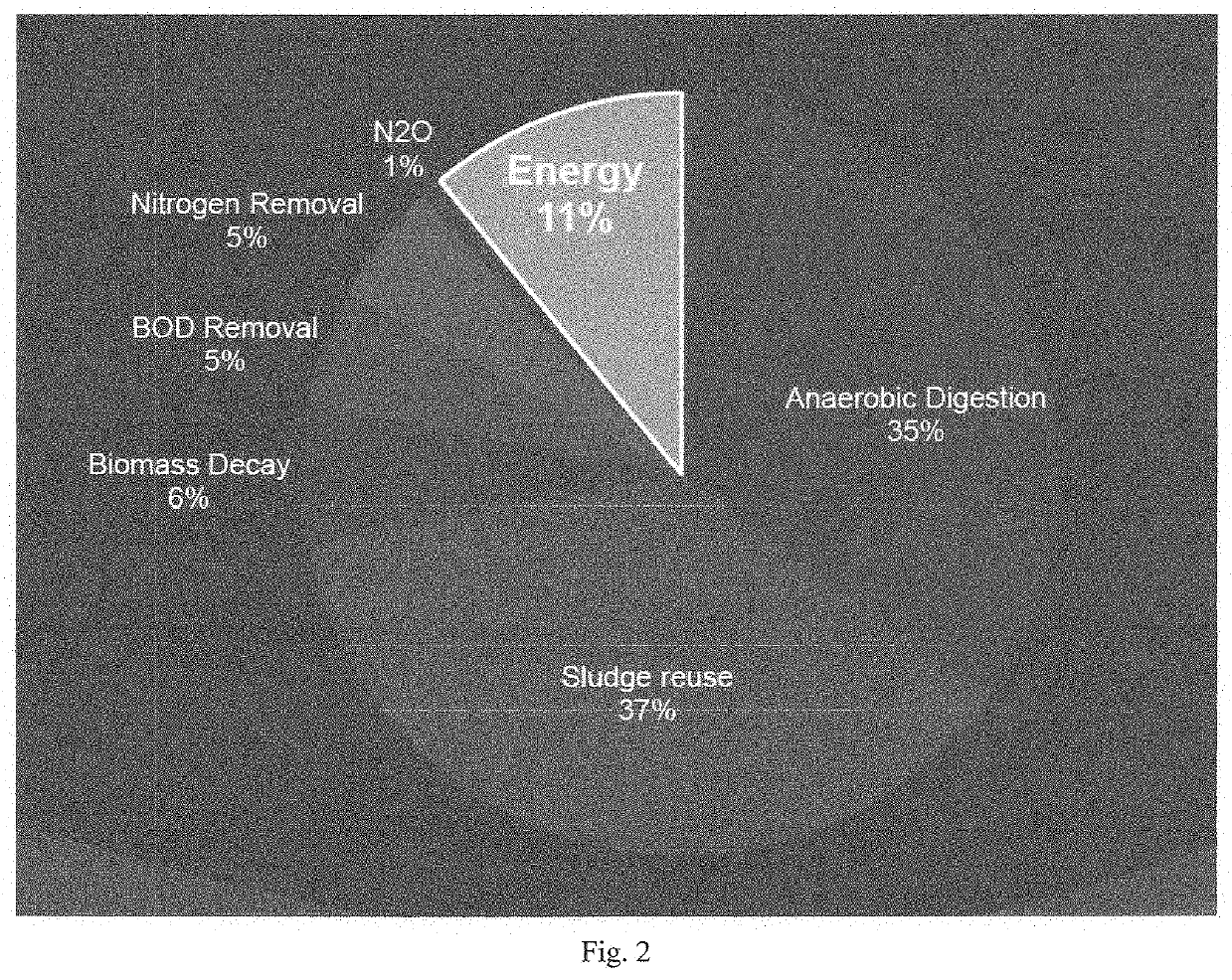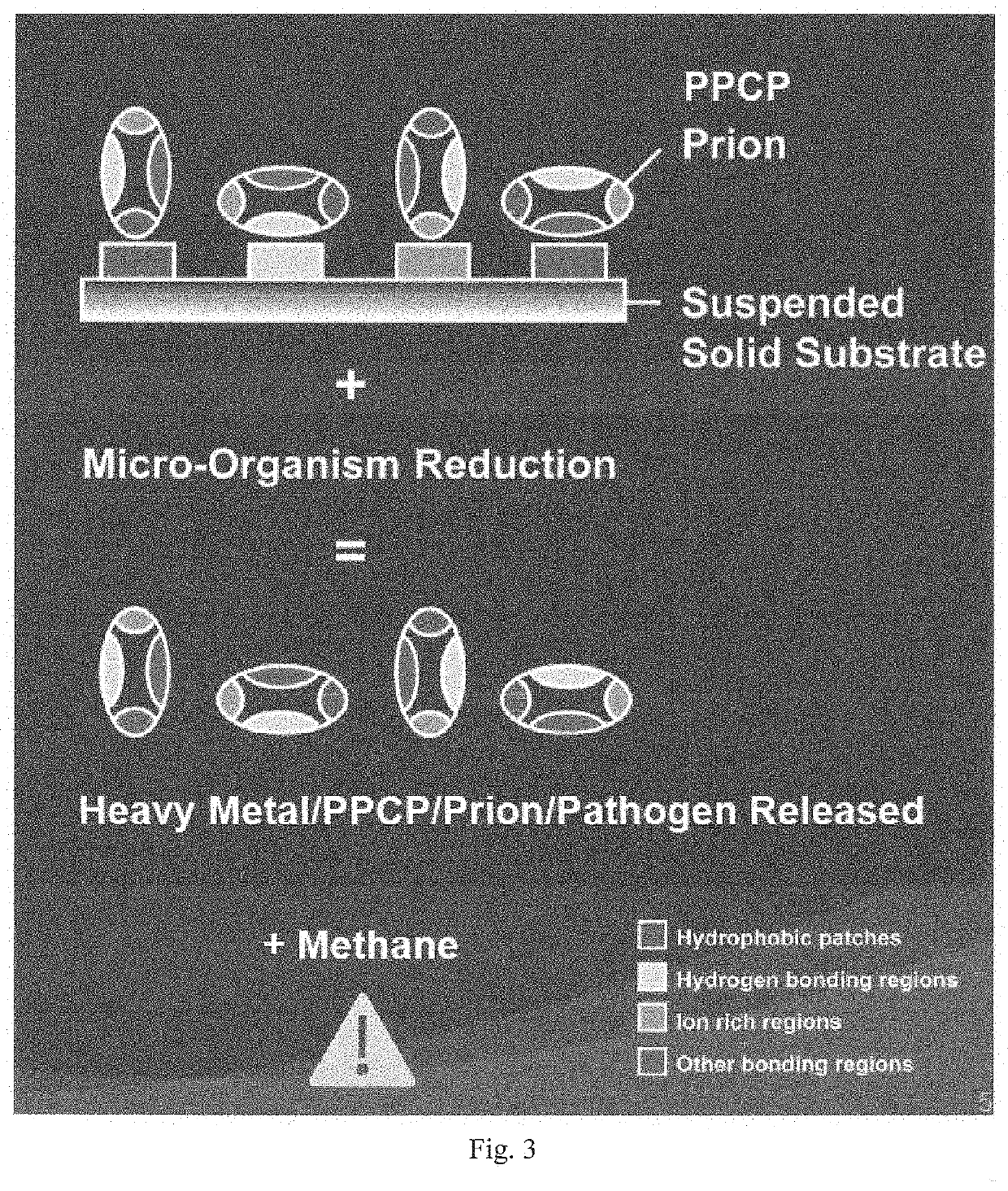Method and Apparatus to Reduce Wastewater Greenhouse Gas Emissions, Nitrogen and Phosphorous Without Bioreactor Processing
a technology of wastewater and greenhouse gas, applied in the field of wastewater treatment methods to reduce greenhouse gas emissions, can solve the problems of difficult control of environmental conditions for digestion, energy and capital investment, and anaerobic digestion
- Summary
- Abstract
- Description
- Claims
- Application Information
AI Technical Summary
Benefits of technology
Problems solved by technology
Method used
Image
Examples
Embodiment Construction
[0062]An example of the present invention will be best understood by reference to the drawings. The components, as generally described and illustrated, could be arranged and designed in a wide variety of different configurations. Thus, the description of the embodiments is not intended to limit the scope of the invention, as claimed, but is merely representative of presently preferred embodiments of the invention.
[0063]FIG. 1 illustrates the source of greenhouse gas emissions for a typical wastewater treatment plant.
[0064]FIG. 2 illustrates the percentages of greenhouse gas emissions from various wastewater treatment plant processes illustrated in FIG. 1. Land application produces 37% of the greenhouse gas emissions followed by anaerobic digestion producing 35% of the greenhouse gas emissions. Gasification / combustion of the upfront separated suspended solids avoids both these processes to significantly reduce greenhouse gas production while generating power.
[0065]For example, anaero...
PUM
| Property | Measurement | Unit |
|---|---|---|
| temperature | aaaaa | aaaaa |
| pH | aaaaa | aaaaa |
| wave length | aaaaa | aaaaa |
Abstract
Description
Claims
Application Information
 Login to View More
Login to View More - R&D
- Intellectual Property
- Life Sciences
- Materials
- Tech Scout
- Unparalleled Data Quality
- Higher Quality Content
- 60% Fewer Hallucinations
Browse by: Latest US Patents, China's latest patents, Technical Efficacy Thesaurus, Application Domain, Technology Topic, Popular Technical Reports.
© 2025 PatSnap. All rights reserved.Legal|Privacy policy|Modern Slavery Act Transparency Statement|Sitemap|About US| Contact US: help@patsnap.com



